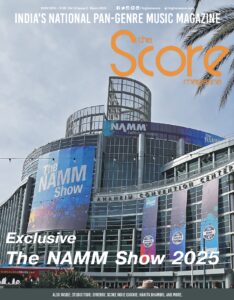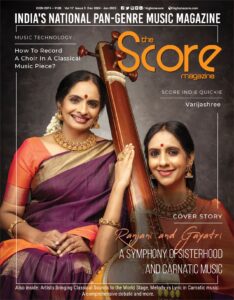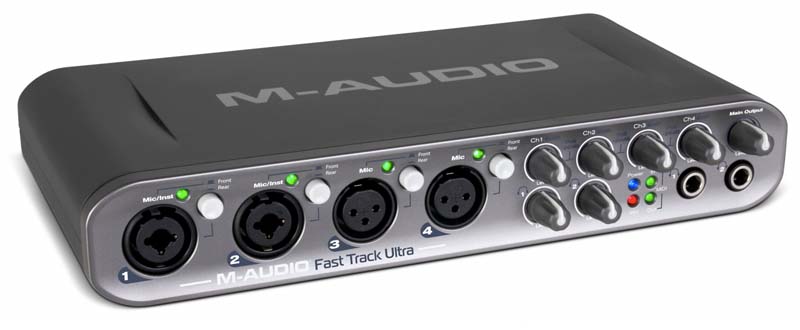Now that the technology required to record and produce music has become extremely accessible, the number of people involved in it, both as professionals as well as enthusiasts, have grown exponentially over the past couple of decades. Earlier, musicians had to move mountains to get their music recorded whereas, today it’s become commonplace for musicians to have their recording set up in their bedrooms, a home studio if you will. Digital Audio Workstations (DAWs) have revolutionized the playing field and opened up so many possibilities. The one piece of equipment that holds every DAW based recording setup in place and acts as the hub is the Audio Interface.
As a result, the audio interface is the most important gear-choice that you’ll make because this is the piece of equipment that your home studio will be built around. These boxes have your microphone preamps, direct inputs, line inputs, outputs, and converters. So the first step that you’ll take towards building your home studio set up is narrowing down on your options of interfaces that meet all your requirements while fitting smugly into your budget. We’ll jump right into the factors that you will have to consider while picking an audio interface for your home recording set up.
Your first requirement would be to look for an audio interface with a connection port that is compatible with the computer that you own. The device might have a USB, firewire, thunderbolt or PCI connector. Quite often, people overlook this and end up with an interface that isn’t compatible with their computer. This way when you finally wind up shopping for the interface, you can look at your options with the connection type that is permitted by your computer.
The next factor that you would be looking into is if the interface has the specifications required to handle the kind of recording sessions that you intend to have. For example, if you’re a singer-songwriter who wants to record either a guitar or a keyboard, simultaneously along with the vocals, then an interface with two inputs, a mic level, and a line level, is all you’ll need. This would work just as well if you just want to record one input at a time and then layer by over dubbing. In case, you intend to record a jazz trio, for example, and you want to use 4 mics on the kit (a kick mic, a snare mic, and two overheads) and at least one mic each on the guitar and bass amplifiers, in which case, you would need at least 6 mic level inputs in your interface. You should choose your device based on the number of instruments that you’d be recording simultaneously and the miking techniques that you’re going to implement to record them. You should also keep in mind the type of inputs that your interface has to offer. For example, if you need to record 8 mics simultaneously then an interface that contains, 4 mic level inputs and 4 line level inputs won’t do because you absolutely need 8 mic pre-amps. The pre-amps that are used in your interface play a huge role in the quality of the recording that you will end up with. Therefore, it is advisable to look for an interface that is built with well-reputed pre-amps.
Another thing to keep in mind is that the software that comes with the sound card, which works between your interface and your DAW plays a huge role in determining how efficiently you can work with the interface. If you have a software that is inconvenient or not particularly user-friendly, in a lot of instances it could really get in the way of your work flow and slow you down. While investing in equipment, you should understand that your requirements as a musician or a producer in the near future may not be exactly the same as what it is at the moment. For example, if you’re a hip-hop producer but if you have an inclination towards jazz instrumentation and can see yourself being involved in a session that would require you record a live jazz band, then it would be wise to invest in an interface that’ll enable you to do so. As opposed to being forced to buy a new piece of equipment every time a slightly different set up is required.
After looking at all the technical specifications, the next factor that will ultimately determine your options is the amount of money that you are willing to shell out to get your hands on these products of modern science. So, to make life easier for you, we’ve classified the best interfaces out there in each budget category, so you can get your money’s worth.
Under Rs.15,000
Focusrite Scarlett 2i2
This USB powered box comes with 2 combo inputs, which allows each input to be used as either line level or mic level inputs. This USB device is a great option as it allows you to record at higher sample rates than most other budget interfaces with lower latency.
Behringer U-phoria UMC404HD
This monster of an interface has amazing money to performance value with 4 combo inputs each laced with MIDAS pre-amps, 4 outputs, 4 TRS inserts for external processing units and zero latency monitoring capabilities.
Pre Sonus Audiobox USB 2X2
This sturdily built interface has 2 combo inputs as well and is perfect to start out with your home studio.
Under Rs.30,000
Pre Sonus 44VSL
Arguably the best interface at this price range, this device has 4 brilliant mic pre-amps in the form of combo inputs with 4 additional TRS inputs in the back that allow you to at high sample rates.
M-Audio Fast Track Ultra
This device is an absolute beast with 4 mic pre-amps out of which two are combo inputs, along with 6 TRS inputs at the back. In addition, it also has two TRS insert jacks that can be used to patch in a hardware processor. To round it all up, M-Audio blesses us with 6 TRS outputs that should be more than sufficient to work in a home studio set-up.
Focusrite 18i8
This USB interface is extremely useful when it comes to tasks such as tracking a live band in real time since it has 4 mic pre-amps in the form of combo inputs, 4 TRS inputs in the back and the option to use external pre-amps to track all the 18 inputs.
This article was featured in our August issue: http://bit.ly/2uTjRFv
[huge_it_slider id=”7″]








